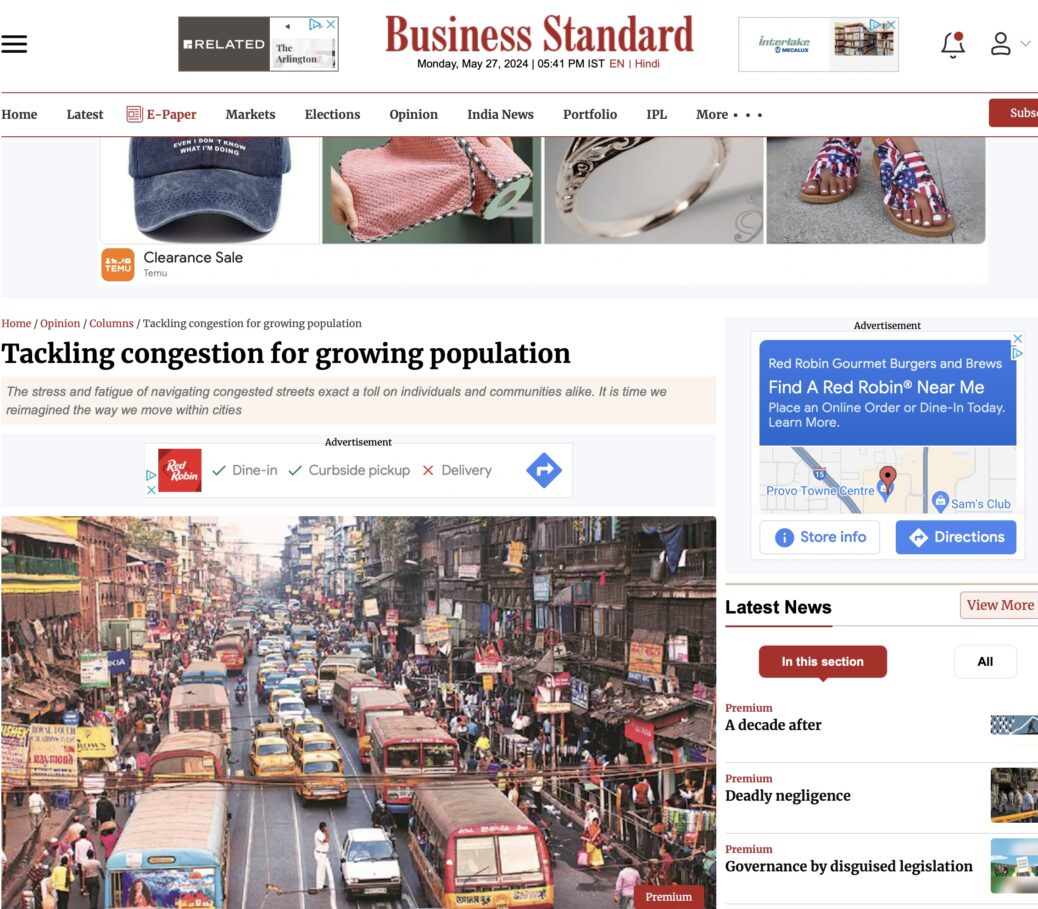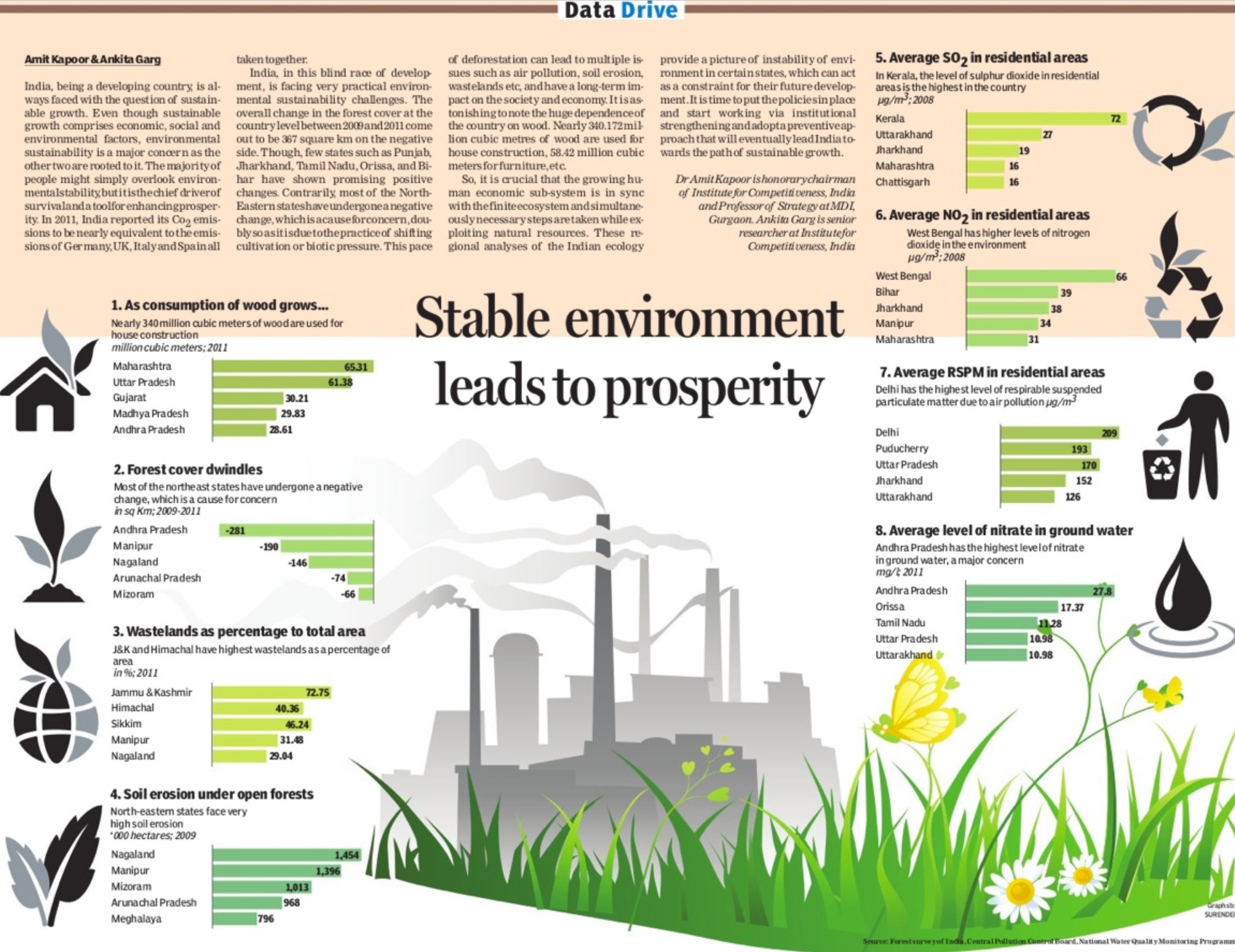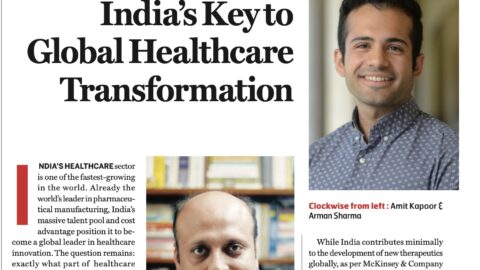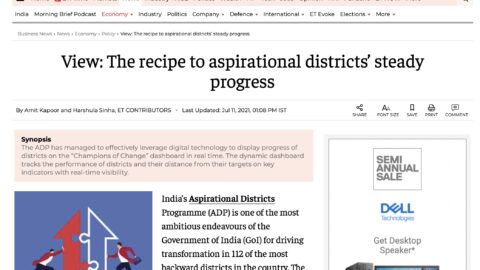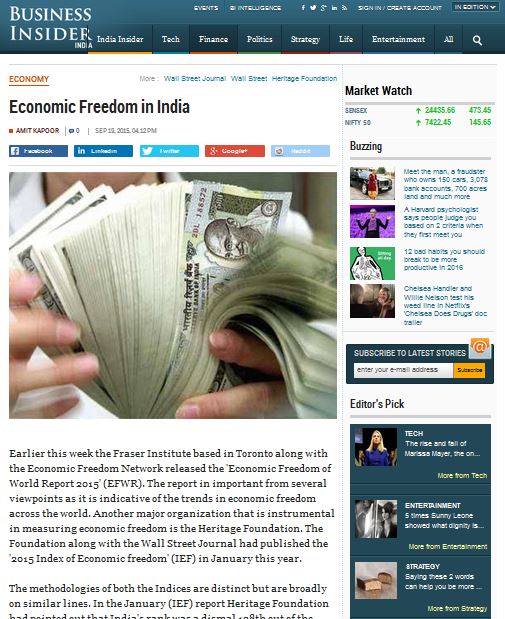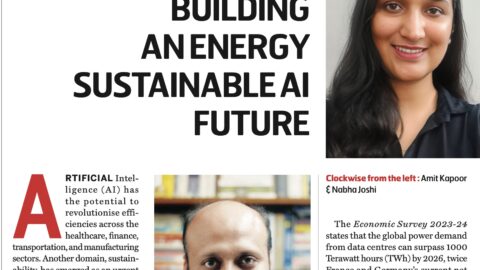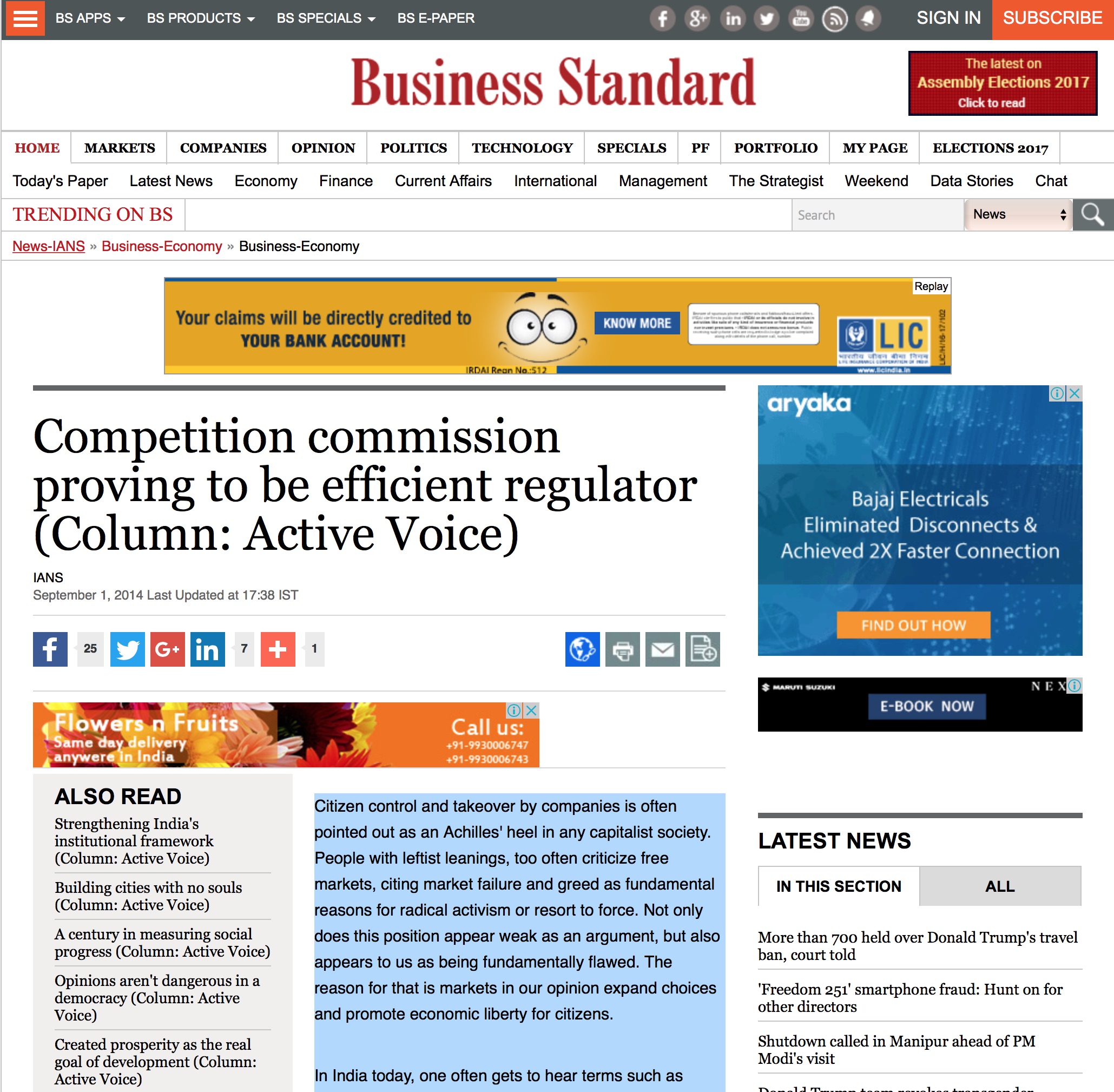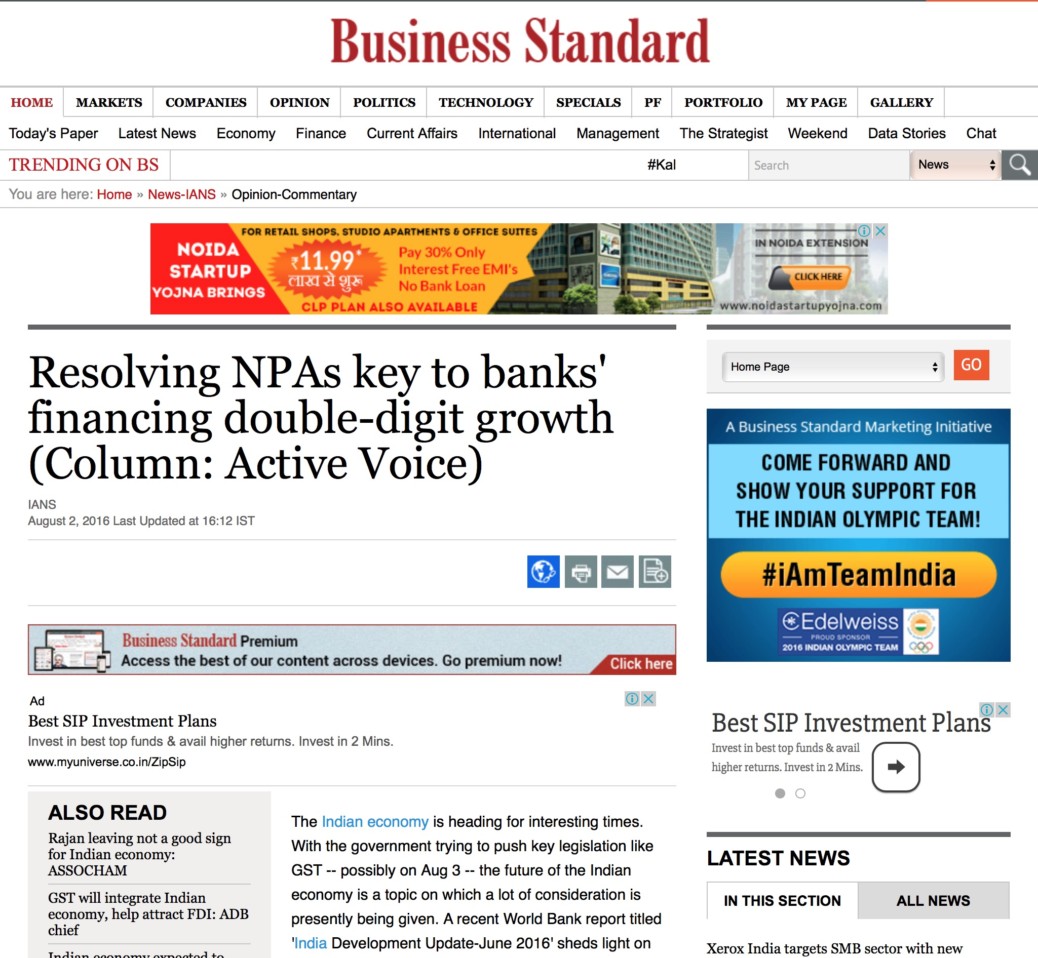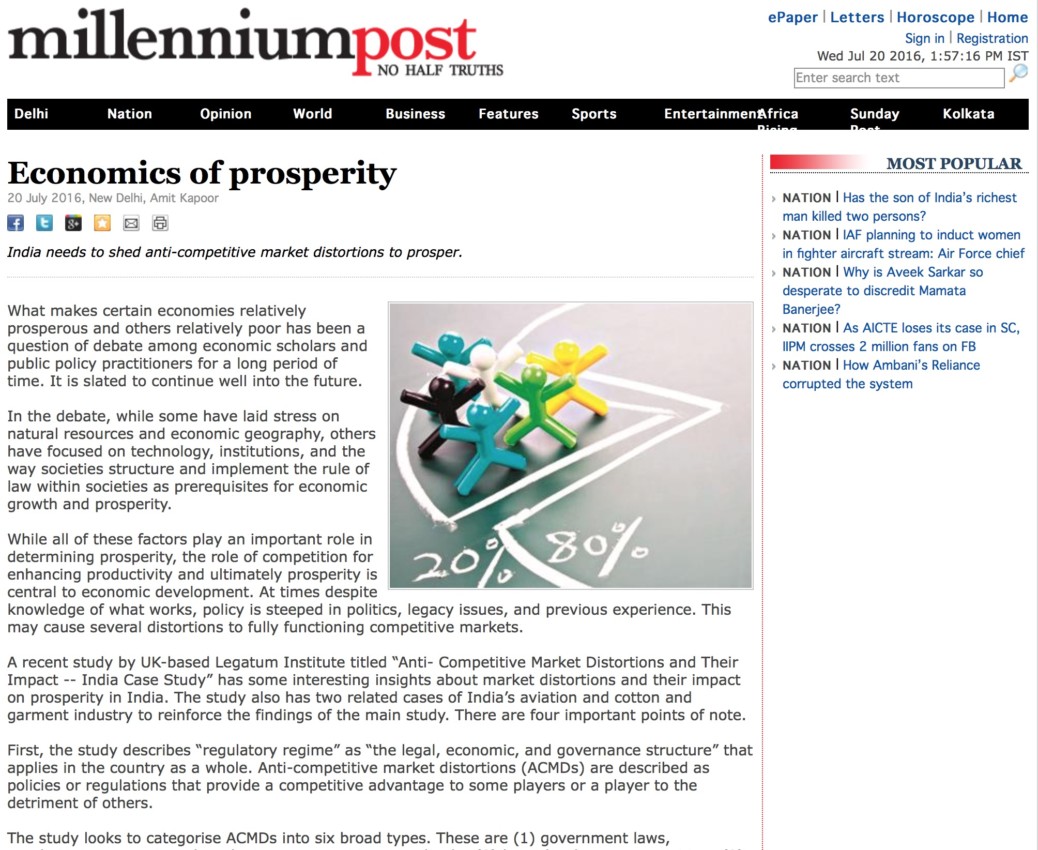By Amit Kapoor & Bibek Debroy
Many times, we wonder, ‘Are our cities truly prepared?’ This question weighs heavily on us as our population grows and our resources dwindle, leaving our cities ill-prepared for what lies ahead. We discuss the importance of sustainability, energy efficiency, and resource management to improve urban living, yet we overlook a crucial challenge that has persisted throughout history. Since ancient times, transportation has served as the lifeblood of our cities. With the population constantly increasing, so does our reliance on accessible transportation. In fact, the growth in population and the surge in vehicle numbers go hand in hand, leading to more traffic congestion and longer hours spent on roads.
According to recent reports from the UN, our global population is projected to reach 9.7 billion by 2050, with a significant majority—about 68.4%—living in urban areas. In the case of India, the population, currently at 1.4 billion, is expected to surpass 1.5 billion by 2030. By 2047, nearly 51% of the population would live in cities. These numbers are staggering and give us pause to consider the implications for our everyday lives. Since 1950, India has seen its population increase by a billion. At the same time, the number of registered motor vehicles has also skyrocketed from a mere 0.3 million in 1951 to over 326 million in 2020, as noted in the Road Transport Year Book 2019-20. This explosion in vehicle ownership has compounded the age-old problem of traffic congestion, turning our daily journeys into tests of patience and endurance.
Today, our major cities – Bangalore, Pune, Mumbai, and Delhi – suffer from extreme traffic congestion, causing people to lose productive hours of the day. In a study carried out by an Amsterdam-based research group, it was reported that people lost as many as five days in a year (during peak rush hours) stuck in traffic in Pune. In the same study, Bangalore and Pune were reported to be the sixth and seventh cities among the world’s ten worst traffic-hit cities in 2023. Bangalore was also identified as the world’s second most congested city. The toll of this congestion goes beyond the inconvenience of being stuck in traffic. It chips away at the quality of life we aspire to, leaving us frazzled and weary after long commutes. The stress and fatigue of navigating congested streets take a toll on individuals and our communities as a whole. Moreover, the environmental impact cannot be ignored. With vehicles idling in traffic, the air we breathe becomes polluted, posing risks to our health and well-being. As we grapple with these challenges, it’s clear that we need to find sustainable solutions. Investing in efficient public transportation, promoting alternative modes of transport like cycling and walking, and implementing smart urban planning strategies are essential steps in alleviating congestion and creating more livable cities.
Addressing the intertwined challenges of population growth, urbanisation, and transportation demands a concerted effort on multiple fronts. It requires bold policy interventions and innovative solutions that reimagine the way we move within and between cities. By leveraging real-time data and analytics, smart transportation systems can dynamically adjust traffic signals, manage congestion, and provide commuters with up-to-date information on travel conditions. This not only improves the efficiency of transportation networks but also enhances the overall experience for commuters. In addition to investing in public transit, promoting activities like walking and cycling is essential for creating healthier, more livable cities. By designing pedestrian-friendly infrastructure, including dedicated bike lanes and safe sidewalks, we can encourage residents to embrace these sustainable modes of travel. Not only are these activities environment friendly as they reduce congestion and emissions, but also promotes physical activity and improves public health. Furthermore, the adoption of smart transportation systems powered by cutting-edge technology holds immense promise for optimising traffic flow and enhancing mobility. Congestion pricing schemes represent another innovative approach to managing traffic congestion and reducing emissions. These schemes can incentivize the use of alternative modes of transport and discourage unnecessary car trips. Revenue generated from congestion pricing can be reinvested into transportation infrastructure improvements and sustainable mobility initiatives. Urban planning also plays an important role in influencing the future of transportation. By prioritizing mixed-use developments and transit-oriented design, cities can create vibrant, walkable communities where residents can live and work within close proximity to public transit options. This not only reduces reliance on cars but also fosters more sustainable, resilient urban environments.
As we prepare ourselves for more innovative and equitable work, with more and more people benefitting from the advantages and opportunities that cities offer, we must ensure that our cities are equipped to be homes for millions of people. While one of the most important factors to ascertain that remains an optimal usage of transportation infrastructure, it also means that our approaches need to be rooted in principles of sustainability and are climate-friendly.
The article was published with Business Standard on May 22, 2024

